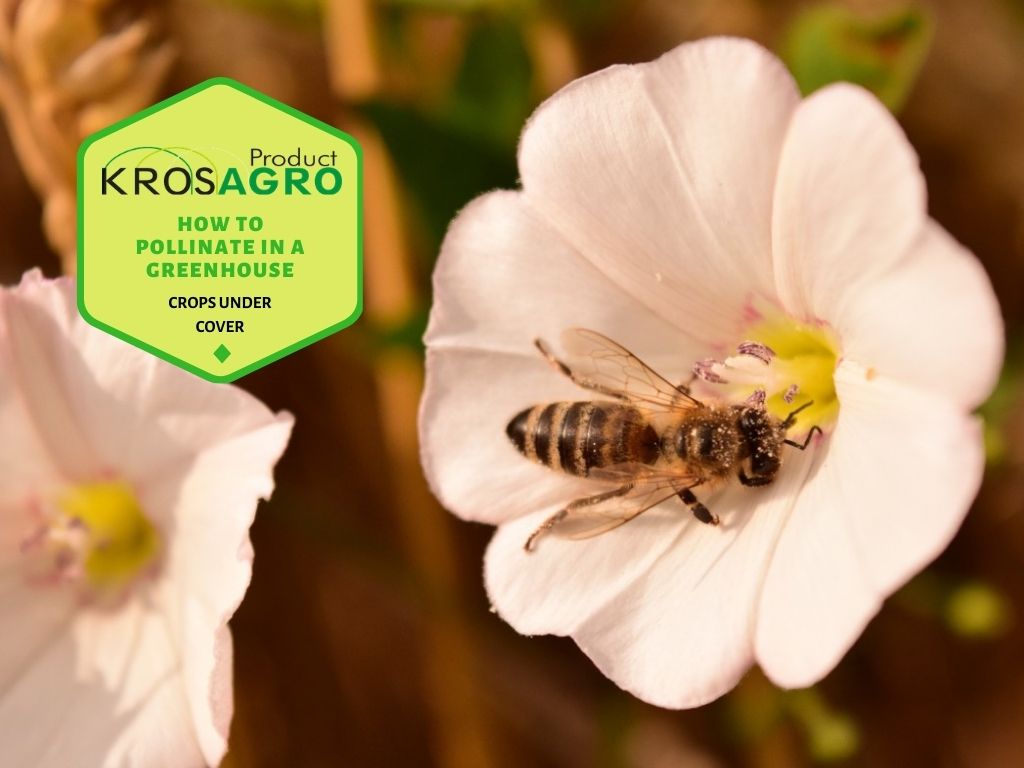For sure, you want to know the ways on how to pollinate in a greenhouse. Before everything else, let us talk about pollination as well as how it affects the production of crops in a greenhouse.
Well, pollination is the process in which the transfer of pollen to the stigma of a flower takes place. Through pollination, plants can ovulate. Ovulation is the process of seed formation of the flower of a plant that later on outgrowth as a fruit.
In this article, we’ll delve further into how to pollinate in a greenhouse. Let’s first understand why pollination is vital in every greenhouse. So, just read on!
Contents
Why Pollinate In A Greenhouse?
Pollinators are nature’s helpers to transfer pollen from one flower to another. Examples of these are wind, birds, bees, butterflies, and other insects. But pollination in a greenhouse is different.
The greenhouse is known as a structure made of glass used in growing sensitive and fragile plants. It protects the plant from harmful and disadvantageous growth such as insects, weather, and also seasons. But through this, it also serves as a barrier that prevents pollination from happening.
Plants pollinated by nature’s pollinators are not able to do their jobs because of the protective glass wall. In this case, production slows down as it affects and lessens the pollination process. Well, there are ways on how to pollinate in a greenhouse, that’s why you have to stay tuned and discover more!
Guidelines And Methods Of Greenhouse Pollination
Here are some methods that could help you in pollinating your plants. How to pollinate your plants in your greenhouse?
#1 Through manual pollination
Manual pollination is a way of pollinating the plants using our hands. Transferring pollen from one flower to another by disturbing plants through tapping and shaking off pollens to one flower to another to pollinate and produce crops.
Take note that there are plants that have female and male flower parts. In this, we should transfer the pollen of male plants to female plants for them to pollinate. While there is a flower that already has two flower parts, the male and the female, by tapping, they could do pollination.
Manually pollinating the plants also has the risk factor. Such as damaging the plants by tapping and shaking its stems or flowers. In the greenhouse, we could raise seasonal plants and sensitive, fragile variety and kind.
Through tapping and stunning, it may result in damaging the leaves. Breaking the stems or branches, and withering the petals of the flowers as you manually do this process.
#2 Through device pollination
Device pollination is a kind of pollination process using a device such as; electric or battery-operated. These devices contain a vibrating head that can operate in rubbing the bottom part of the flower with pollen grains and transfer it to another flower. This process is less damaging in pollinating the plants.
#3 Through bee pollination
Bumblebees are one of the most helpful pollinators in nature. There are commercial bumblebees that you can buy to put in use in your greenhouse. You can supply their food by merely letting them sip nectar to your plants while doing pollination.
You can have a natural pollinator while consuming some honey in their beehives. Also provide them package nectar in able for them to live in a greenhouse because it is a closed surrounding for them and plants. If you use bees in pollinating your greenhouse, strictly avoid spraying pesticides and insecticides.
#4 Through healthy airflow
Healthy airflow is one of the things we should consider in the pollination process in the greenhouse. Airflow affects the humidity, temperature inside a greenhouse; this also can a factor in affecting the conditions of plants such as molds and diseases that may develop and affect the production and growth of the plants.
Airflows also indicate the production of pollens in plants as airflows change the humidity and temperature. Having barns like windows and doors may help in the circulation of a healthy airflow.
Factors To Consider In Manual And Device Pollination
Have you decided on the ways on how to pollinate in a greenhouse? If you’ve opted for either manual or device pollination, then follow the steps below.
#1 Perform it in a specific hour
Do this process at10: AM or 3:00 PM. Why so? These are a perfect time, considering heat and humidity. The time, temperature, and moisture are essential agents that affect the pollination process. Having high temperatures may cause unsuccessful pollination.
#2 Decide on the plant
Determine what kind of plant you’re pollinating. Remember that there are self-pollinating plants with female and male parts. And some of these plants do not undergo the process of cross-pollination.
#3 Cross-pollinating
Cross-pollination is a process in which you rub or brush the male flower, which contains the anther to the stigma of a female flower. You can just at least pick the male flowers and find a female flower to rub it. If you have a device, you can use it in transferring the pollen to another.
Conclusion
In conclusion to this, plants have a different kind of pollination process. Some plants self-pollinate, while other plants use cross-pollination with the help of nature’s pollinators. Pollination in the greenhouse is essential in the growth and production of the plants.
Having some time and a little bit of your effort in doing this method in pollinating your plants in the greenhouse effect much in maintaining and prolonging the beauty, life, and health of your plants.
May you find this information about how to pollinate in a greenhouse satisfying, exciting, and useful. With these methods, you find pollination in your greenhouse is much more comfortable and fun.
